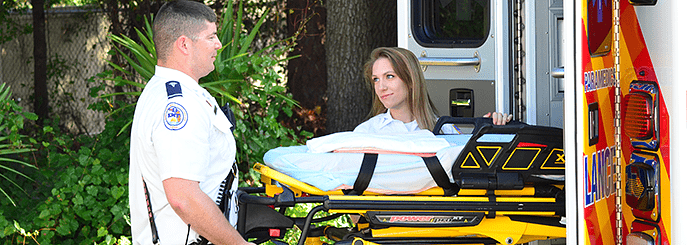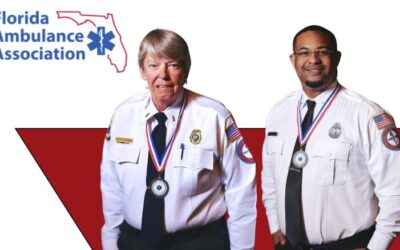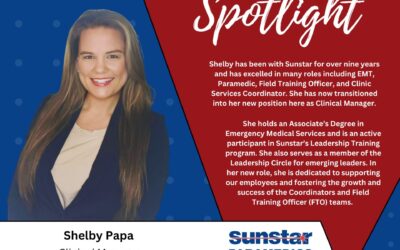With a fleet of 100 ambulances that cover 3.5 million miles and transport over 175,000 patients each year, Sunstar Paramedics needs a robust safety program. With the help of its insurance agency, Sunstar completed a voluntary safety audit and incorporated some of the top safety features in its ambulances. Sunstar Safety and Risk Coordinator Josh Hoover wanted to take it a step further and make additional improvements to Sunstar’s culture of safety.
Hoover analyzed additional actions that Sunstar could take to keep its paramedics and EMTs mindful of safety in everything they do. He began with training Sunstar’s crews on correct techniques to lift patients, which is driven by a national program called “Fit Responder.” He also helped implement critical work indicators to evaluate lifting safety.
He then developed the Safety Officer Program, which identifies employees who ride with supervisors and often move from truck to truck to interact with several EMS crews throughout the day. They also assist paramedics and EMTs with clinical issues.
“In any job, you find complacency or the, ‘it won’t happen to me’ syndrome,” said Hoover. “Having a team of seven Safety Officers out there to remind people of risky actions can help mitigate a problem before it arises.”
Safety Officers must first work as a Field Training Officer or Preceptor, have excellent driving scores, and have a desire to keep patients, providers and the community safe. Safety Officers must also possess good judgment and the ability to remediate and educate as they are observing emergency and non-emergency driving, speed, situational awareness, critical thinking skills as well as patient handling.
“When you have a staff that is out on the road working independently of direct supervision, there needs to be checks and balances,” said Hoover. “The Safety Officers help to provide that.”
Hoover also developed an educational track for Safety Officers, which includes accompanying him on an eight-hour ride-along to fully understand the expectations. Safety Officers attend the National Association of Emergency Medical Technicians’ (NAEMT) Safety Class and a class on crew resource management. They also participate in quarterly meetings to share successes as well as what can be improved upon with each other.
The Safety Officer Program began in August 2016, and while the program is still in its early phases, Sunstar has seen positive changes in its overall safety culture. Hoover hopes to gather sufficient data by the end of the program’s first year to assess its impact, but a decrease in the number of both Sunstar’s vehicle contacts – meaning a mirror may have dinged another car or building – and its general liability claims since the program’s inception is a positive indicator.



